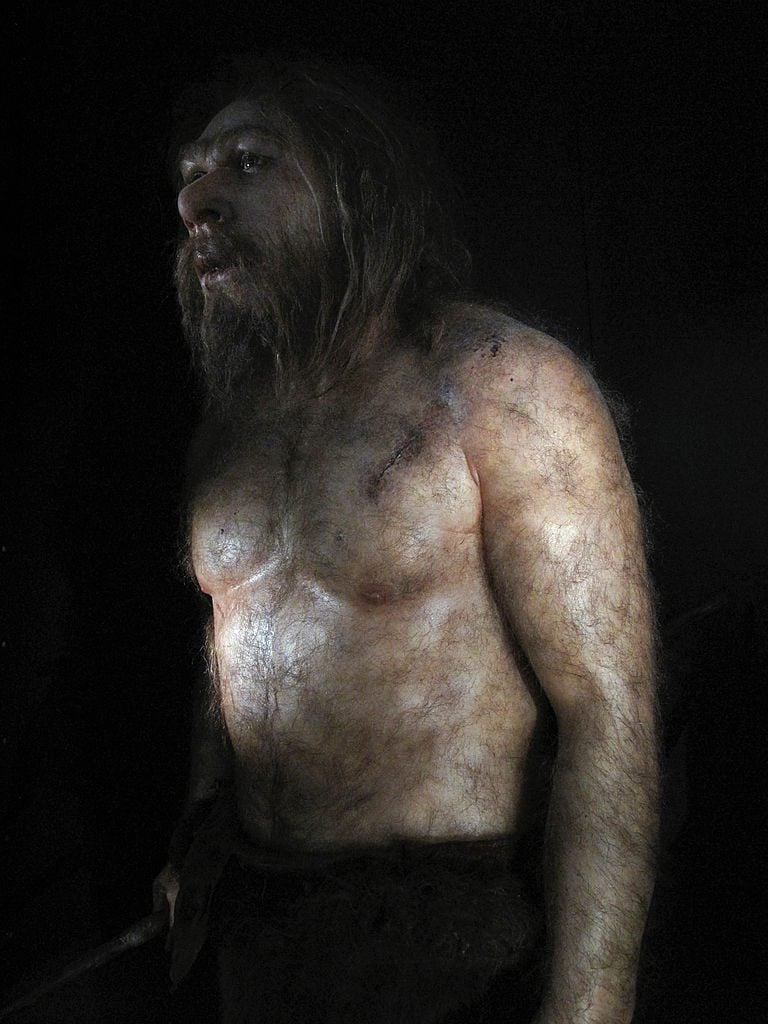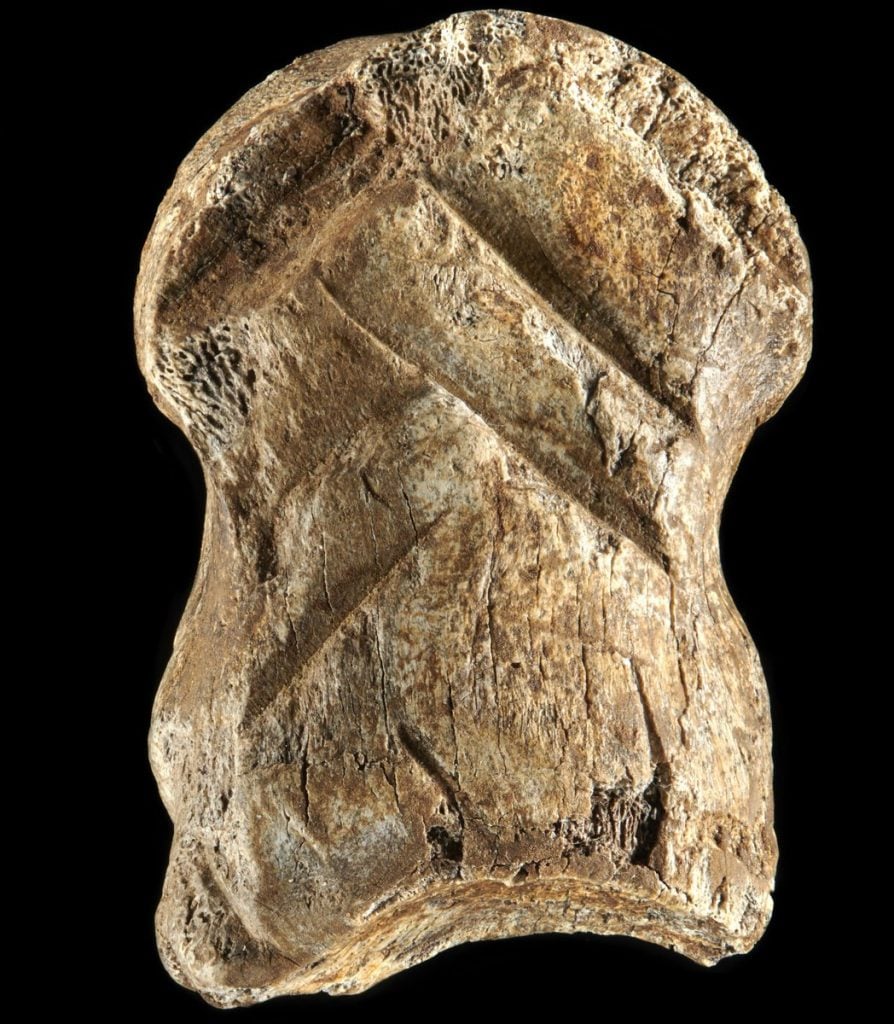Archaeology & History
Scientists Say an Intricately Carved 51,000-Year-Old Deer Bone Is the Earliest Example of Neanderthals’ Artistic Abilities
The bone was unearthed at the mouth of the Unicorn Cave in Germany.

The bone was unearthed at the mouth of the Unicorn Cave in Germany.

Caroline Goldstein

A 51,000-year-old carved bone fragment may be one of the earliest works of art, researchers announced in a paper published this week in the journal Nature Ecology and Evolution.
The work, made from a knuckle bone belonging to a hoofed animal (likely a deer), was unearthed at the entrance to the Unicorn Cave in West Herz by a team of German researchers in 2019.
The carved bone is decorated with 10 angled lines in a chevron pattern that are clearly intentional, and not just random or naturally occurring indentations.
Relying on multiple types of testing, including radiocarbon dating, scientists deduced that the bone had to have been carved by Neanderthals, and not modern homo sapiens, who did not come to the area until at least 1,000 years later.

A 51,000-year-old deer bone with symbolic carvings. Photo: V. Minkus / Courtesy of Lower Saxony Office for Heritage.
Although members of the archaic human species had sophisticated technology that allowed them to build fires, construct dwellings, weave rudimentary clothing, hunt, and communicate with one another, it is still commonly held that they were skull-cracking brutes unable to form complex thoughts or act on creative impulses.
But the decorative bone presents an important piece of evidence that Neanderthals were capable of “conceptual imagination,” the researchers wrote. “Therefore, Neanderthal’s awareness of symbolic meaning is very likely.”
“It’s an idea, a planned motif that you have in your mind and translate into reality,” co-author of the paper Thomas Terberger told National Geographic magazine, “It’s the start of culture, the start of abstract thinking, the birth of art.”